“Lights!” In days gone by, this phrase appropriately shouted before “camera” and “action” shows the importance of light in motion film. Now with video, studio lighting still makes up a core piece that will make or break a professional video shoot. Be it be for an educational video or a promotional video, understanding the importance of controlling light is crucial. You can easily add light through bouncing sunlight or powering LED light panels or incandescent bulbs, or remove light by shielding light from the subject by using flags or fabric. In this article, we touch on the most popular concept for newbies, which uses three lights around a subject, commonly called a three point light setup.
Since most of studio equipment isn't part of the camera, light and sound play an equally large role. Lighting is the most important element of a photo or video project aside from your subject according to Kodak, and the sun isn't always enough. Here are the beginner how-tos from proper white balancing to a three-point lighting setup, here are the basics that must top your checklist:
1. Know Your Camera and Lens' Strengths
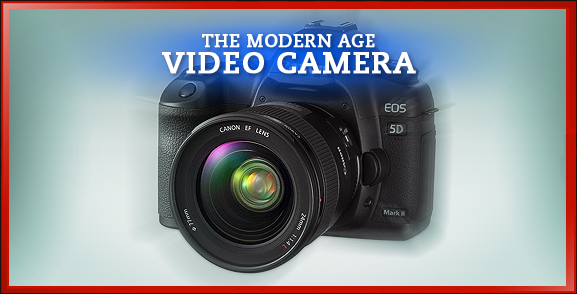
The first rule is knowing the features of your camera. Though you will use independent light fixtures before shooting, stock photo galleries like iStock offer great examples and advice on how best to use on-board configurations like proper exposure, which let you manipulate how much light your lens should actually let in; and Aperture, which helps you match a shutter speed to any motion in your subject. Of note, all every type of lighting hinges on a proper white balance.
2. White Balance for Indoor or Outdoor Scenes
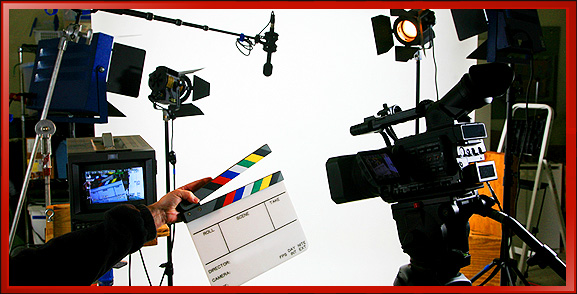
White balance refers to matching the camera's idea of what ‘white' to the type of lighting being used. Unless your environment allows a large amount of ambient daylight, tungsten lighting (indoor light) is an essential for all indoor shoots. Canon discusses lights' varying “color temperature,” typically measured in Kelvin, and the easiest way to think of it photographically is the higher the temperature, the bluer the appearance. With tungsten's moderate 3500K relative to that of daylight, a simple white balance will allow your subject to reflect a more natural color temperature of an otherwise warm-lit room.
Sorry, there are no polls available at the moment.3. The Basic Lighting Setup
No matter what type of light you use, most shoots will require three-point lighting, and it's just what it sounds like – three lights strategically placed to reveal the dimensions of your subject that are often hidden in a plain photo or video.
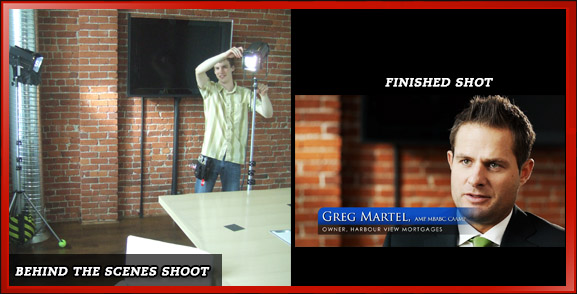
The Standard 3-Point Lighting Setup
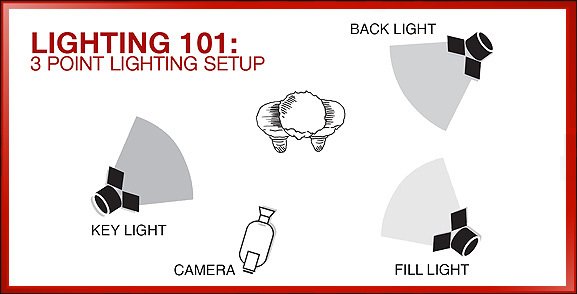
- The first is the main light, or “key” light, placed to one side, and facing the talent. This light is often behind the interviewer off camera in video shoots containing dialogue, mitigating nose shadows and rendering a more flattering angle of the subject when s/he looks in that direction.
- The next is a smaller fill light, opposite and symmetrical to the key. With just the key light, you might notice the other side of the talent is dark or too modeled; this smaller light “fills in” the otherwise dim areas of the scene, creating the right amount of depth with a smaller amount of light. If needed, both this light and the main light can be softened with inflammable boxes and fabrics fashioned against the bulb. Make sure they're inflammable, or lighting won't be your most pressing problem…
- The back light is the final point of the setup. Sometimes called a “rim” light, this third lamp hovers behind the subject, allowing him/her to pop from the background and appear less glued to whatever they're in front of.
Finished Lighting Setup: Promotional Video Lighting
A Fresnel is a more subjective asset for a ‘sharp' photo or video shoot. Fresnels are focusable glass lenses that, depending on your project, enable you to concentrate the intensity of your light, allowing you to “spot” it more locally or “flood” it more evenly across the shooting environment. Generally used for the former purpose in lighthouses and searchlights, detailed by Britannica, a Fresnel is nonetheless just as valuable to an emerging cameraman as tungsten, white balance procedures and your average three-point arrangement.
And, action!
Related: Top 10 Must-Have Video DSLR Accessories
Please ask any questions you have below!

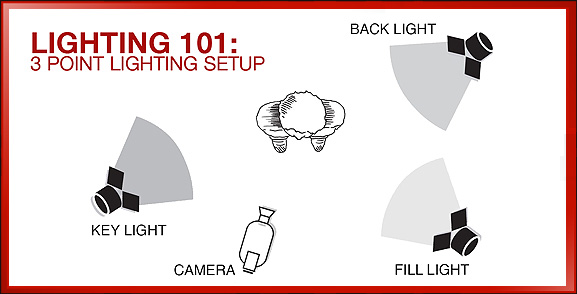




[…] all unto itself. But it’s surprisingly easy to get a great effect since there are normally only three primary lights in a video […]
[…] arrangement for your video by adding or removing lights, but usually, you should consider a three-point lighting setup, which consists of a main light, fill lights, and a backlight. When shooting outdoors, it’s […]
[…] all unto itself. But it’s surprisingly easy to get a great effect since there are normally only three primary lights in a video […]